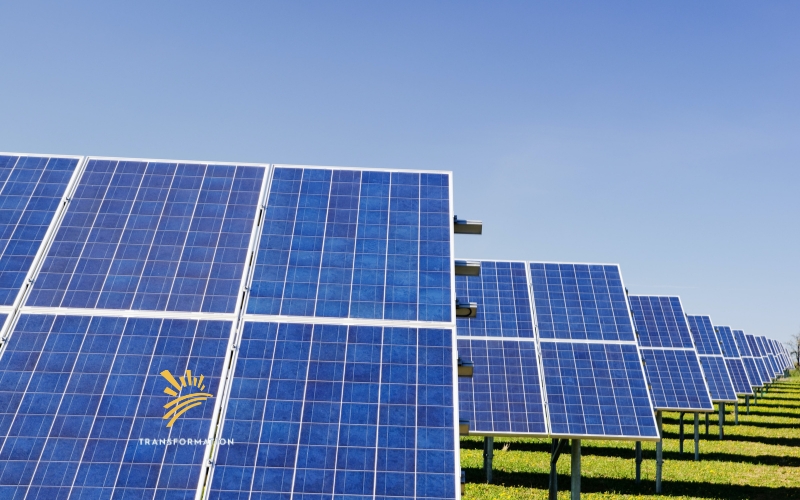The Use of Green Technology Will Impact the Economy
When the world’s population began to gain awareness of the effects of climate change and global warming, the resulting discussions led to much discussion about what could be done to mitigate the process. One area that has been discussed is how the use of green technology can help substantially impact the economy.
The green economy has been providing the macro-economic approach to economic growth with the goal of promoting investments, employment, and skills.
To accomplish these aims, multi-stakeholder partnerships are encouraged to support both consumption patterns and production techniques so that they can be modified in tandem over time. This leads towards cohesive global communities that practice environmental responsibility by transitioning away from traditional fossil fuels, which have been known causes of climate change reactions such as floods, droughts, etc.
The use of green technology has become critical in ensuring that our planet remains habitable for future generations. What are some examples of green technology? How will it impact economic development?
What is Green Technology?
Green technology uses environmentally-friendly materials, methods, and processes in producing and consuming goods. In other words, green technology is the utilization of sustainable technologies and is also referred to as sustainable technology.
These technologies include everything from renewable energy to producing environmentally-friendly goods and services. Green technology is also used to produce more durable or recyclable goods. Green technology is a means of producing better goods for the environment and improving efficiency in terms of the amount of resources needed to produce a given product.
What are some examples of green technology?
Many forms of green technology can be broken down into three categories: renewable resources, environmental conservation, and environmental protection. These examples include:
Renewable Resources
Renewable resources refer to resources that have been replenished over time through natural processes such as the sun or wind. The use of solar panels, nuclear energy, clean energy, electric vehicles, and other building materials enhances our standard of living. At this point, we are already seeing shoes and clothing created by recycled plastic.
These renewable resources have helped in the production of energy using these energy sources. Examples of renewable resources include wind, solar, hydroelectric, and geothermal energy. Regarding energy generation, the two primary ways these types of resources can be used to generate electricity are wind and solar power.
Solar power is renewable because it uses the sun’s rays to produce electricity. Wind power is another type of renewable resource because it uses the energy from the wind to generate electricity through turbines located on our planet’s surface.
Environmental Conservation
Environmental conservation refers to using natural resources or processes that reduce or prevent pollution and resource depletion. The idea behind this is to conserve resources by preventing waste. The most common way this is done is by keeping a natural habitat intact and preserving ecosystems.
Another great method is to prevent pollution from occurring in the first place. For example, when manufacturing goods or small businesses can use natural materials such as wood, chemicals that could damage the environment or harm humans should not be added. This means that there will be less waste created in terms of raw materials, especially when using fossil fuels, and less pollution in the air or water due to manufacturing these goods with non-polluting methods.
Environmental protection
The reduction of negative environmental impacts through producing goods and services with environmentally-friendly methods and materials through green technology products and practices protects our environment in several ways. Examples of environmental protection include recycling, reusing materials and fuels, and using biodegradable products. These practices can result in reduced environmental impacts and emissions of greenhouse gases. It also helps in supporting green economies and sustaining the environment.
Impact of Green Technology on the Economy
In the past, our society has been driven by the economy. Today, many people are moving toward more sustainable development, which could lead to a booming future for green-tech innovation and business accordingly! The question is whether or not this movement will lead to economic growth.
While there is no one-size-fits-all answer to this question, some trends point to a positive economic impact. The data is not clear cut when it comes to whether these movements will result in an increase or decrease in your income; some trends show positive impacts while others point towards negatives, so we’ll just have to wait to see what happens over time before we can be certain.
1. Save On Energy Bills
The use of green technology has led to significant reductions in both energy and greenhouse gas emissions. These reductions result from increased efficiency in both residential and industrial sectors.
The use of green technology has enabled the use of renewable resources, such as solar and wind energy. These sources are cheaper than traditional fossil fuels and provide an alternative to the increasing use of imported fossil fuels. The use of green technology is important because it enables people to pay less for electricity or to heat their homes or offices. Think solar energy.
2. Cleaner Energy
Using green technology such as wind turbines reduces dependence on fossil fuels for generating electricity. Using renewable sources such as hydroelectricity or solar power helps reduce air pollution, which is important because air pollution is one of the leading contributing causes of death worldwide.
Moreover, green technology can also be used to reduce greenhouse gas emissions, because it reduces the energy and resources used to create, store, transport, and use fossil fuels.
The transition to a green economy would not only protect the environment but also provide sustainable solutions for modern living. In fact, this shift can be used as an opportunity in order reduce greenhouse gas emissions by reducing our reliance on fossil fuels that are highly polluting and ultimately dangerous, if left unchecked.
In doing so, we free up resources such as oil which could then go towards developing new technology like solar panels or other alternatives.
3. Reduced Need To Purchase Raw Materials For Production
The use of green technology reduces the need to purchase raw materials for production. This can be achieved by recycling and reusing metals and plastics. This, in turn, reduces the amount of waste generated, as well as reducing the costs associated with waste disposal.
It also reduces the need to buy new raw materials for production. Reducing the amount of waste generated in this way also helps reduce the pollution caused by landfills.
4. Facilitates Eco-Friendly Agriculture
Green technology is also a means of facilitating eco-friendly agriculture. This is because it reduces the resources and land needed to grow crops. This reduces the amount of land taken up by agriculture and helps reduce soil erosion, which is one of the leading causes of soil degradation. It also reduces the need for fertilizers, pesticides, herbicides, and fungicides to grow crops.
Green technology can also increase the amount of agricultural land available for food production, because it helps reduce the amount of land needed for farming and helps improve soil quality. It also helps to prevent soil erosion and desertification, two of the most serious environmental issues affecting the economy.
5. Increased Efficiency
Green technology helps us become more efficient with our resources and resources, which translates into increased efficiency in the economy. For instance, it takes less time to manufacture a product that uses 80 percent recycled material than a product made only of virgin materials. Reducing energy consumption also reduces the cost per unit produced, which translates into lower costs for consumers at large.
Therefore, this translates into higher economic growth worldwide as it spurs demand for green technology products and services and increases their affordability over traditional commodities such as petroleum-based resources.
As the use of green technology becomes more widespread, we can expect to see a positive impact on the economy. This increase in efficiency will lead to increased productivity and lower costs, benefiting both businesses and consumers. In turn, this will create jobs and spur innovation, further boosting the economy.
With so many benefits, it’s clear that investing in green technology is good for both the environment and the economy.




Leave a Reply